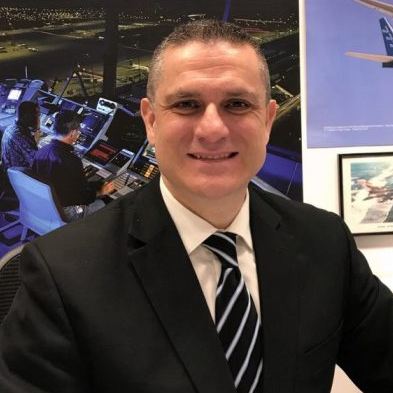Advances in Avionics and Astrionics Systems
A special issue of Aerospace (ISSN 2226-4310).
Deadline for manuscript submissions: 15 December 2024 | Viewed by 5449
Special Issue Editors
Interests: aerospace vehicle design and testing; avionics and air traffic management systems; spaceflight systems design and operations; aerospace robotics and autonomous systems; guidance, navigation and control systems; unmanned aircraft systems (UAS) and UAS traffic management; advanced air mobility and urban air mobility; distributed and intelligent satellite systems; space domain awareness and space traffic management; GNSS integrity monitoring and augmentation; defense C4ISR and electronic warfare systems; cognitive human-machine systems
Special Issues, Collections and Topics in MDPI journals
Interests: aircraft and spacecraft modelling, simulation and optimization, digital twin and virtual prototype development, with focus on UAS/UAM and near-Earth orbits; aerospace GNC, with emphasis on multi-objective and multi-phase trajectory optimization for air and space platforms; aircraft environmental impacts modelling and assessment, aviation sustainability and greening technologies; aviation human factors engineering, human-in-the-loop testing, cognitive aerospace systems and trusted autonomy; avionics and CNS/ATM systems engineering and operations; airborne/spaceborne electro-optics and laser systems design, modelling and experimental characterization
Special Issues, Collections and Topics in MDPI journals
Special Issue Information
Dear Colleagues,
Continuing rapid advances in avionics and astrionics systems are accelerating the introduction of automated decision-making functionalities and the progressive transition to trusted autonomous operations both in atmospheric and space flight. Major benefits of these capabilities include the de-crewing of flight decks and ground control centers, as well as the safe and efficient operations of air and space platforms in a shared, unsegregated environment. In the commercial aviation context, the introduction of Cyber-Physical System (CPS) architectures and Artificial Intelligence (AI) is supporting the development of single-pilot operated aircraft, with the co-pilot potentially replaced by a digital assistant and/or a remote pilot on the ground. A single remote pilot on the ground, on the other hand, will no longer be restricted to controlling a single aircraft and instead will be allowed to control multiple manned and unmanned vehicles, in line with the so-called One-to-Many (OTM) operational concept.
Important efforts are also being devoted to the integration of Unmanned Aircraft Systems (UAS) in all classes of airspace, eliciting the introduction of UAS Traffic Management (UTM) services seamlessly integrated with the existing (and evolving) ATM framework. In particular, UTM requires substantial advances in Communication, Navigation, Surveillance (CNS) for ATM (CNS/ATM) and Avionics (CNS+A) technologies and associated regulatory frameworks, especially to enable low-altitude and Beyond-Line-of-Sight (BLoS) operations. Recent advances in communications, navigation and Sense-and-Avoid (SAA) technology are therefore progressively supporting UTM operations in medium-to-high density operational environments, including urban environments. Research efforts are also necessary to demonstrate the feasibility of CNS+A technologies capable of contributing to the emission reduction targets set by the International Civil Aviation Organization (ICAO), national governments and various large-scale international research initiatives. Therefore, growing emphasis is now being placed on environmental performance enhancements, focusing on Air Traffic Flow Management (ATFM), dynamic airspace management, 4-dimensional (4D) trajectory optimization, airport automation and, in the near future, urban flight operations.
In addition to CNS+A technologies for air operations, space CPS and AI-based architectures are also being researched for a wide range of practical applications including commercial satellites, space transport/tourism, and interplanetary scientific missions. In this context, it is anticipated that economically viable and reliable astrionics CPS will play a fundamental role in the successful development of the space sector and significant research efforts are needed in the field of reusable space transportation systems, Space Traffic Management (STM), and Intelligent Satellite Systems (SmartSats). In particular, the operation of space launch and re-entry platforms currently requires considerable airspace segregation provisions, which if continued will become increasingly disruptive to civil air traffic. Moreover, the currently limited space situational awareness is posing significant challenges to the safety and sustainability of spaceflight due to the rapidly growing amount of resident space objects and particularly orbital debris. The deployment of network-centric CNS+A systems and their functional integration with ground-based ATM in a Space Traffic Management (STM) framework will support much more flexible and efficient use of the airspace with higher levels of safety. These evolutions will support the transition to what the research community has started designating as Multi-Domain Traffic Management.
This Special Issue will focus on innovative works and advances in avionics and astrionics systems. Comprehensive reviews, original research articles, communications, and extended conference articles are welcome to submit for peer review and possible publication.
Prof. Dr. Roberto Sabatini
Dr. Alessandro Gardi
Guest Editors
Manuscript Submission Information
Manuscripts should be submitted online at www.mdpi.com by registering and logging in to this website. Once you are registered, click here to go to the submission form. Manuscripts can be submitted until the deadline. All submissions that pass pre-check are peer-reviewed. Accepted papers will be published continuously in the journal (as soon as accepted) and will be listed together on the special issue website. Research articles, review articles as well as short communications are invited. For planned papers, a title and short abstract (about 100 words) can be sent to the Editorial Office for announcement on this website.
Submitted manuscripts should not have been published previously, nor be under consideration for publication elsewhere (except conference proceedings papers). All manuscripts are thoroughly refereed through a single-blind peer-review process. A guide for authors and other relevant information for submission of manuscripts is available on the Instructions for Authors page. Aerospace is an international peer-reviewed open access monthly journal published by MDPI.
Please visit the Instructions for Authors page before submitting a manuscript. The Article Processing Charge (APC) for publication in this open access journal is 2400 CHF (Swiss Francs). Submitted papers should be well formatted and use good English. Authors may use MDPI's English editing service prior to publication or during author revisions.
Keywords
- aerospace vehicle
- aircraft systems
- spacecraft systems
- avionics
- astrionics
- air traffic management
- spaceflight
- robotics
- autonomous systems
- guidance, navigation and control
- unmanned aircraft systems
- uas traffic management
- advanced air mobility
- urban air mobility
- regional air mobility
- distributed satellite systems
- artificial intelligence
- machine learning
- digital transformation
- environmental sustainability
- sustainable aviation
- intelligent systems
- satellite systems
- distributed space systems
- space domain awareness
- space situation awareness
- space traffic management
- sensor fusion
- satellite navigation
- navigation systems
- guidance systems
- control systems
- integrity monitoring
- knowledge-based systems
- safety-critical systems
- integrity augmentation
- defense systems
- intelligence
- surveillance
- reconnaissance
- human–machine systems






